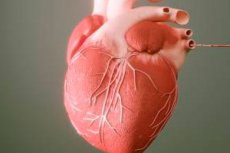
改善心肌梗死后患者的预后是心脏病学的主要目标之一。这包括全面了解病理生理学并及早识别预后不良的高风险患者。
来自慕尼黑大学医院、亥姆霍兹慕尼黑大学和其他机构的研究人员使用高科技生物医学和生物信息学方法,全面绘制了人类对心肌梗塞的免疫反应图,并确定了与该疾病临床病程相关的特征。
研究结果发表在《自然医学》杂志上。
仅在德国,每年就有约30万人心脏病发作。近几十年来,心脏病患者的治疗手段已显著改善。然而,由于心肌无法再生,许多患者在心脏病发作后会发展为心力衰竭。
根据动物研究,炎症反应在心脏病发作后起着重要作用,对心肌功能的恢复具有决定性的影响。
“不适当或过度的免疫反应可能会损害心脏功能的恢复,”新研究的主要作者,慕尼黑大学医院医学 I 系临床科学家 Kami Pekayvaz 博士说。
由他领导的团队,包括慕尼黑大学医院医学一系的 Victoria Knottenberg、儿科博士 Leo Nicolai 和 Konstantin Stark 教授以及慕尼黑亥姆霍兹大学的 Corinna Losert 和 Matthias Heinig 博士,首次分析了免疫系统如何应对人类的心肌梗塞。
研究人员研究了慕尼黑大学医院接受治疗的心脏病患者的血液样本,并显示出不同的临床结果。
免疫反应图谱
研究人员对血液中的免疫细胞进行了单独的RNA表达分析。RNA是在细胞将基因信息转化为蛋白质时产生的——所谓的转录组分析可以揭示细胞的当前状态和特征。
此外,研究人员还利用蛋白质分析技术检测血浆中的各种物质,从而提供有关炎症和其他过程的详细信息。这些分析技术属于最现代的方法之一,即所谓的多组学方法。
一种特定的生物信息学技术(MOFA,即多组学数据因子分析)识别出大量获得的数据中的常见模式。
亥姆霍兹慕尼黑生物信息学工作组负责人马蒂亚斯·海尼格博士表示:“这种方法非常适合识别和总结许多朝着同一方向协调的较小效应。” 这使得创建心肌梗死后免疫反应图谱成为可能。
“这些模式可以解释患者临床和时间进程之间的差异,”慕尼黑大学医院心脏病学高级顾问康斯坦丁·斯塔克教授说道。这意味着某些“免疫特征”与心脏功能恢复得更好相关,而另一些则与心脏功能恢复得更差相关。
这份心肌梗死免疫反应图谱对于心血管疾病领域的进一步基础研究具有重要意义,并可能表明血液样本的多组学分析可用于预测患者梗死的临床病程。然而,基于MOFA的心血管疾病诊断概念必须在进一步的研究中得到验证——而这正是慕尼黑研究人员计划在未来几年进行的研究。

